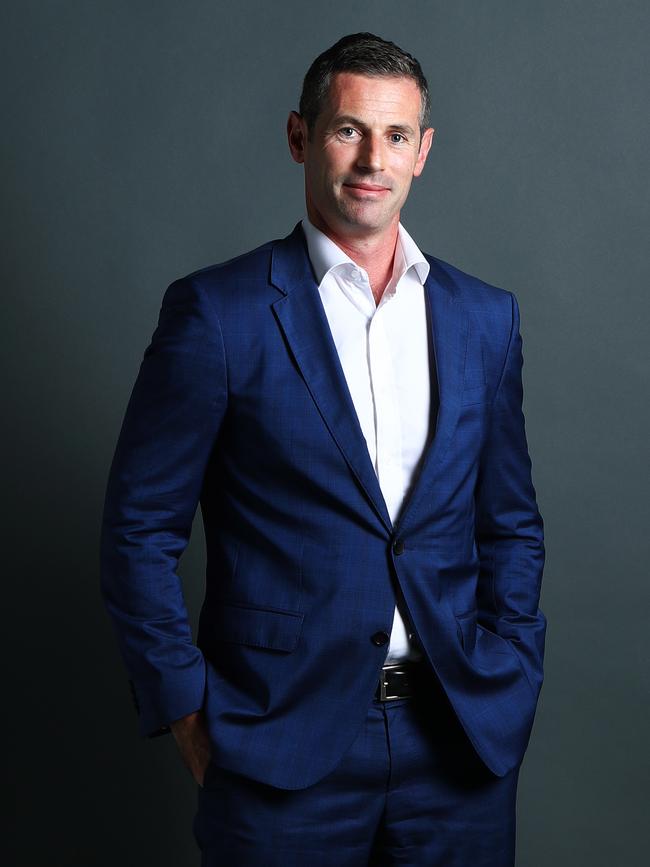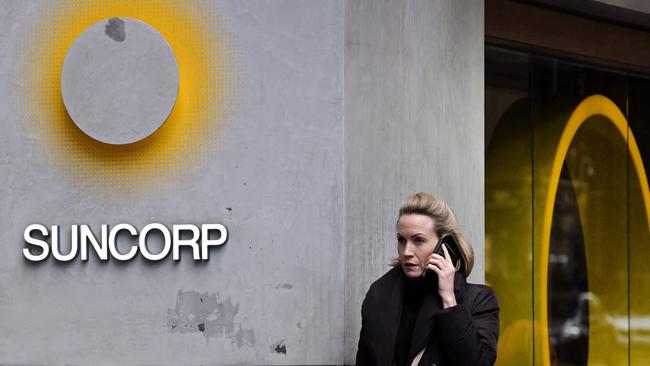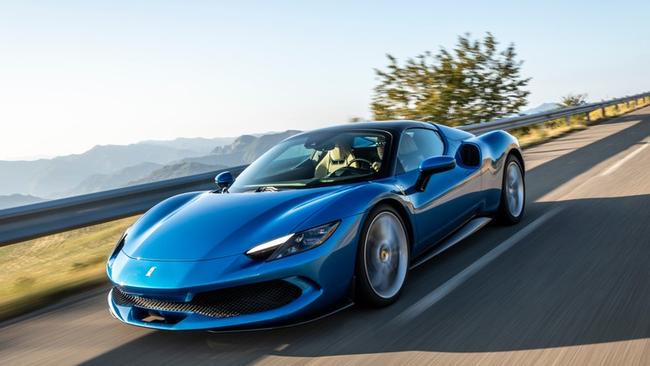
And so it did for Downer, which has warned of more than $550m writedowns across business as new chief executive Peter Tompkins set about cleaning up the balance sheet for the accident-prone industrial services group.
While the hit is non-cash, it still puts Downer into a full-year loss of $386m when it delivers its numbers later this month.

But the move has put the focus on the risks of hostile takeovers and the hefty $1.2bn price that former chief executive Grant Fenn paid for the underperforming Spotless business in 2017.
The bulk of the writedown, or $350m, is from the carrying value of the Spotless business now sitting in Downer’s books under the name of Facilities. The hit takes the value of the unit from $1.3bn to a little below $1bn.
Tompkins, who took charge this year, says his new management team have taken a different view of the landscape following the release this year of the Albanese government’s ambitious Defence review. The focus of the $19bn review is set to overhaul defence forces to focus more on capital and technology rather than sustaining operations, which is where Downer operates.
This means the focus is going to be on the creation of additional capability in defence and to pay for this there is likely to be a slowdown in the minor capital works space that is Downer’s core business.
Tompkins expects there to be both “positives and negatives” for Downer arising from the defence strategic review, but for now he is factoring only the negative side of the ledger.
The on-market takeover of Spotless was messy from the start, with Downer unable to get full acceptances for its $1.15 share bid, after being cornered by US hedge fund Coltrane.
Downer was eventually able to move on and took full control of Spotless in 2021, along with a hefty debt burden. But this meant it was years behind in integration and strategy. Fenn eventually sold the laundries business at a loss and made an exit from Spotless’ hospitality business including its plum MCG contract, which ground to a halt during the Covid years.
What’s left is a Facilities business that provides catering services to maintenance for mining and mostly government clients, including defence, education, health.
Other areas under pressure for Downer are troubled utilities engineering contacts in Victoria with $133m in writedowns. For now Tompkins is looking to exit a number of unprofitable and low margin projects in water and power maintenance, a move he says reflects Downer’s lower risk appetite.
Tompkins also has one eye on the real cost line and is pushing through a savings program that involves cutting 400 jobs, which is now expected to be completed by the end of the year.
The moves, Tompkins says, are part of his mantra of a “back to basics” approach. The next focus will be in operational excellence in risk management.
Suncorp’s day
It’s a big moment not just for ANZ boss Shayne Elliott, but for the entire banking sector on Friday morning when the Australian Competition and Consumer Commission hands down its call on whether the big four lender should buyout Suncorp’s banking arm for $4.9bn.
The acquisition was announced a little more than a year ago and the competition regulator has been going through an intensive process for more than seven months with thousands of pages submitted of evidence. The market betting is ANZ will conditionally get a green light on the deal, potentially with restrictions around agribusiness or small-to-mid-sized business lending. However, the drawn-out nature of the decision suggests it will become harder for any of the big four banks to make a substantial buy. Indeed, based on the current banking landscape this could well be the last of the big bank acquisitions of a regional lender.

An approach by Bendigo Bank to Suncorp for a tie-up before the ANZ option was announced remains highly appealing for the competition regulator, but it is strategically messy for Suncorp.
A full refusal of the deal is likely to trigger an appeals process but Suncorp wants to get moving in its transformation of becoming a pure-play insurer. Suncorp will also release additional capital held by the bank back to shareholders.
As part of evidence given to the ACCC, ANZ’s Elliott said there was “simplicity” in the Suncorp portfolio and alignment with what it was doing. He also noted Suncorp with a 2-3 per cent national market share “is not a close competitor” of ANZ with a 14 per cent share. ANZ will still remain the fourth biggest retail bank on a national measure and a long way off market leader Commonwealth Bank.
Even if the ACCC gives ANZ the green light, the deal still needs to be signed off by treasurer Jim Chalmers.
Fast Ferrari
Some 43 per cent of new Ferraris sold in the June quarter were hybrids. The pace in the shift to hybrid drivetrains for the Italian luxury carmaker is remarkable given just this time last year it was 18 per cent. On the current path, half of Ferrari’s sales will be hybrids by the end of the year.
But the big question is whether the Europe and US-listed carmaker can still make the leap to full electric. In a June quarter update to investors Ferrari’s global boss Benedetto Vigna said plans for a fully electric Ferrari are still on track to be launched by mid-2025.
However, Ferrari is off to a slow start in the EV stakes compared to rivals, which has raised doubts about its own promise to turn carbon neutral by 2030. German carmaker Porsche has a big headstart with EVs representing the fastest-growing segment for its sales.
Ferrari is nearing completion of its “e-building” in its Italian base of Maranello. This is where Ferrari’s future EV will be produced, although other cars will also be made there. The carmaker wants to control the entire process, designing and building motors and batteries in-house.

Speaking to analysts overnight, Vigna says there are three important blocks in an EV: The battery, the engine and the electronics in the middle.
“It’s not one alone that is making the difference. It’s the interplay of these three elements, the way they work together that make a difference … we will have our own electric engine, F1 derived, that will be used together with our new kind of electronics,” Vigna says.
Ferrari meanwhile boosted its full-year profit outlook, given higher than expected revenue with customers opting for the “personalisation” of features, which is adding an additional premium to already-inflated Ferrari prices.
Choosing things like higher-end paint jobs, more carbon and specialised brake parts underpinned a jump in revenue, helping to offset a slightly lower number of cars sold.
Ferrari’s high-end customers are now “tailoring the cars like their personal dress”, Vigna says.
While it doesn’t break out local numbers, Ferrari’s Asia-Pacific sales, which covers markets outside of China, Hong Kong and Taiwan, were up slightly during the June half to 1221 units. Total global sales during the June quarter came in at 3392, down 1.8 per cent. Net profit for the June half of €631m ($1.05bn) was up sharply from €490m the same time last year.






With a new chairman, chief executive and chief financial officer in place after taking the reputational hit of uncovering accounting errors going back years, this moment was always coming.